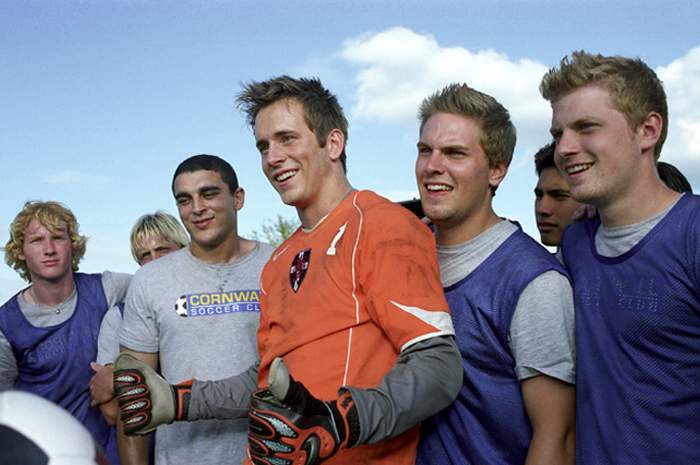After viewing She’s The Man, we discussed in-depth
the notions of misogyny and objectification present in the film. Olivia does not have a shred of motivation in
her character other than getting Sebastian, Viola’s mother displays a strict
adherence to the gender norm of what a female “should” be, and the other female
characters are either made fun of for not being classically attractive (such as
Eunice) or are only present as sex objects (Monique, Yvonne, and Kia).
Taking this logic a step further, I would even argue that
Viola, while having agency in regards to achieving her goal- to make the man’s soccer team-
ultimately still portrays a situation where she wants to get revenge on a
man. After her boyfriend Justin states
that “soccer is only for men”, she dumps Justin. While the film presents itself as a story of
her showing that she can fit in on the team, it could still be read as a male
centered narrative. By having Viola’s
anger at Justin motivate the beginning of the film, it gives him the agency and
the power. This differs from the play,
where Viola makes the decision to cross dress on her own, for her own
protection. Viola in Shakespeare’s
version of the play is much more independent.
However, while genderfication definitely rears its ugly head
in regards to women, it does not hold its punches when it comes to male roles
either. Even when overlooking the idea
that each man in her dormitory is somehow completely oblivious to Viola’s cross
dressing, they all conform to the stereotype of un-intelligent hyper
masculinity. Duke, Toby, and the rest of
their gang are muscular and aggressive.
None of them understand how to talk to women (marking them repeatedly as
the “other”), and use the objectification of women for Viola to fit in with
them. This is augmented by their coach
role models, who repeatedly call their players “girls”. Those that do not fit this ideal, such as the
principal and the RA, are viewed as creepy, weird, and perverted. While Sebastian and Paul do not have hyper
masculine aspects to their character either, Sebastian is slotted into the
typical guitar man whore archetype, while Paul is subjected to the gay best
friend role. Neither feel like real
characters with real motivations. In
this way, She’s The Man fails to create real people. It relies entirely on society’s constructed
gender roles to create an ultimately flimsy adaptation of Twelfth Knight.


I completely agree with you that there is a noticeably high adherence to gender stereotypes/archetypes throughout She’s the Man. I find the point you make regarding the motivation behind Viola’s crossdressing particularly interesting, and wonder also how you think the differing ways the film and play portray the way Viola actually goes about crossdressing complicates this matter further? It feels to me that while the play portrays Viola as not only self-motivated but also self-sufficient (being capable of constructing and adhering to her disguise as a man on her own), the movie instead forces Viola to rely heavily on the aid of men in succeeding at her deception (Paul providing information/training the dumbed down film Viola would otherwise be without), thus weakening the character significantly. I also wonder how Paul’s role in constructing the “new” Sebastian affects the majority of the movie’s male cast (Duke, Toby, etc.) inability to see through the her disguise.
ReplyDelete